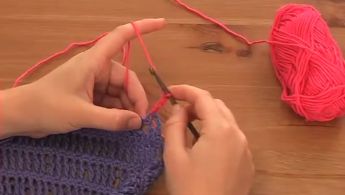How to: Swiss darn (duplicate stitch)
video by
Let's Knit Together
- Overview
- Practical Guides
This is a clever way to add small blocks or details of colour through embroidery while retaining the knitted look of your fabric, as Swiss darning uses yarn in a tapestry needle to go over existing knit stitches.
Before you start, look at the best way to work across the stitches, and bear in mind you may need more than one length of yarn to avoid having long floats on the wrong side.
Rather than actually changing yarn colours as you knit, duplicating stitches with another colour can be a great way to work small motifs, especially if you’re not yet confident with some colourwork techniques or would like to make the motif stand out a little more. Bear in mind this does add an extra layer of yarn to the areas where it is used, but is perfect on stocking stitch for small fiddly shapes or letters. Use the same colour chart as for the knitted motif and make sure you understand how many stitches it shows, usually show one square is a stitch, with a clear colour key. To work out how much yarn you need for an area, you can count the stitches (say ten), then wrap the yarn loosely around the project knitting needle ten times, plus another 15cm for working with the tapestry needle and weaving in ends. To begin, secure on the wrong side so that you can start at the base of the V of the bottom right stitch of the colour area. Bring your needle up at the bottom of the stitch and pass it under both legs of the V of the stitch above, tightening the yarn to follow the diagonal angle of the stitch you are covering. Take your tapestry needle back down at your starting point and you’ll have completed your first duplicated stitch. Now move on to the bottom of your next stitch and repeat this action to cover your area. Remember to avoid long floats at the back if you can, to keep the back of the work neater and use your precious yarn efficiently. Always secure your yarn at the back, and for a scattering of individual stitches weave yarn through between stitches or tie off to prevent snagging.
















_268_268_c1.png)



































